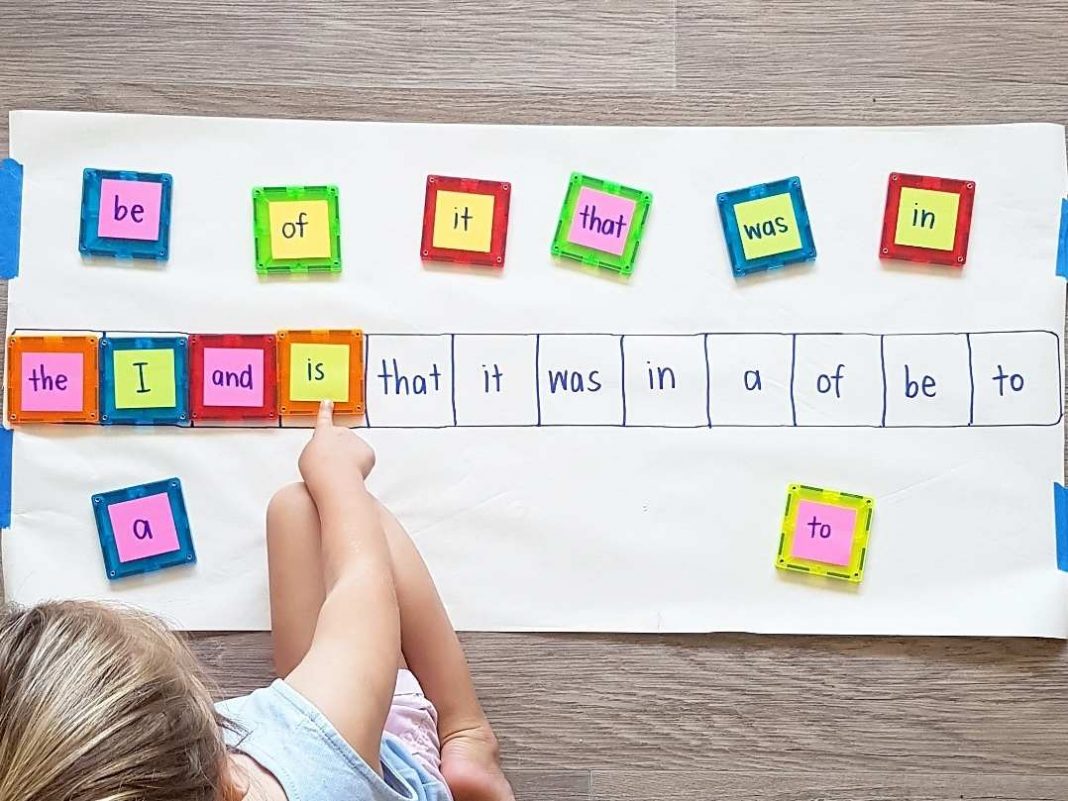Reading is a fundamental skill, vital just as much as speaking. As children start their reading journey, they encounter a variety of words, some easy to sound out and others not so much. Among these, sight words play a crucial role. Engaging in sight word activities can significantly aid in this learning process. According to a study by the Center for the Advancement of Reading and Spelling (CASRF), sight words are commonly used words that appear frequently in both spoken and written language. These are words like “the,” “come,” “to,” and “where,” which we often see and hear.
Math & ELA | PreK To Grade 5
Kids see fun.
You see real learning outcomes.
Watch your kids fall in love with math & reading through our scientifically designed curriculum.
Parents, try for free Teachers, use for free
Learning sight words doesn’t just help with reading; it also enhances writing skills. When children know these words by heart, they don’t have to pause to think about spelling or pronunciation, allowing them to write more smoothly and confidently. This foundational knowledge is built upon in each grade, with new words added to the repertoire, creating a scaffold for more complex reading and comprehension skills.
In this blog, we’ll explore engaging and effective sight word activities to help children master sight words, making their reading journey enjoyable and successful. Let’s dive into these activities and understand how they can transform the learning experience for our young readers.
Ready to make sight word learning a blast? Check out SplashLearn’s fun-filled games that turn practice into play!
13 Engaging and Fun Sight Word Activities
Understanding sight words is essential for young readers. CASRF highlights that sight words account for up to 75% of the words in beginner-level books. This high frequency means that when children learn sight words, they become faster and more fluent readers. Unlike other words, sight words often don’t follow regular phonetic patterns, making them challenging to sound out using standard phonics rules. Therefore, they need to be recognized by sight, which is a skill that significantly aids in reading fluency and comprehension.
Sight words, often tricky for little ones, can be mastered through engaging activities. These activities not only make the learning process enjoyable but also reinforce the recognition and understanding of these frequently used words. Here are fun ways to teach sight words, ensuring that your kids or students will look forward to their sight word practice.
1. Sight Word Online Games
Sight word online games offer an interactive platform for children to practice sight words. Websites like SplashLearn provide a variety of games that make learning sight words engaging and fun.
How it helps: These games often include colorful animations and interactive challenges that keep children motivated and focused. They’re a great tool if you are looking for fun ways on how to make sight words fun, offering a digital twist to traditional learning methods.
2. Sight Word Bingo
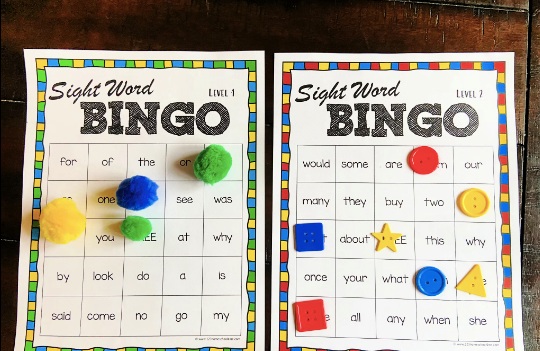
Bingo is a fantastic sight word activity that can be adapted into fun ways to learn sight words. Create Bingo cards with a grid of sight words and give each child a card. Call out words randomly, and if the children have the word on their cards, they can mark it. The first one to complete a row wins.
How it helps: This activity is excellent for a classroom setting as it encourages listening skills and quick word recognition. It’s also a great way to review words in a playful group setting, making learning a communal and competitive experience.
3. Sight Word Worksheets
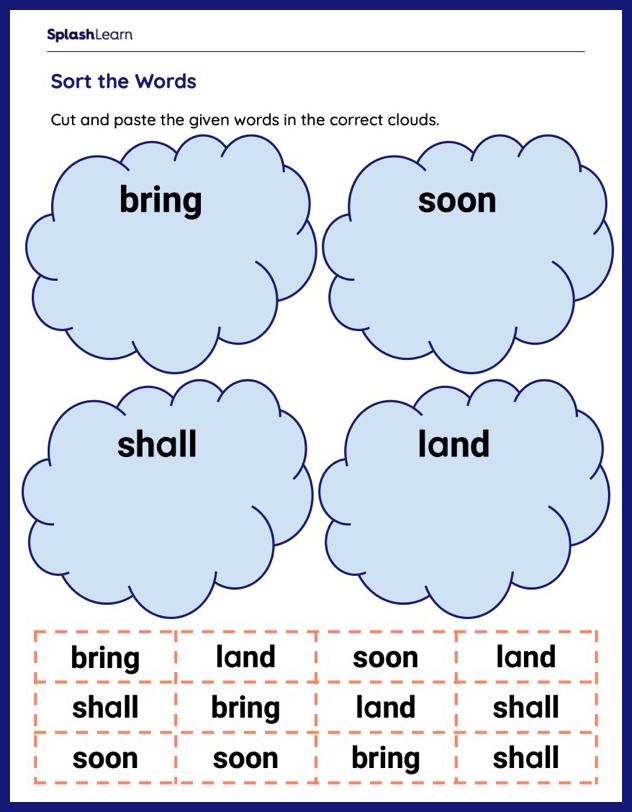
Sight word worksheets are a more structured approach to learning and can be incredibly effective. Resources like SplashLearn offer a range of worksheets tailored to different sight words. These worksheets can include activities like word tracing, matching, and sentence completion.
How it helps: They’re excellent for reinforcing learning and providing practice in reading and writing sight words. Worksheets balance education and enjoyment, allowing for focused yet creative learning.
4. Sight Word Fishing
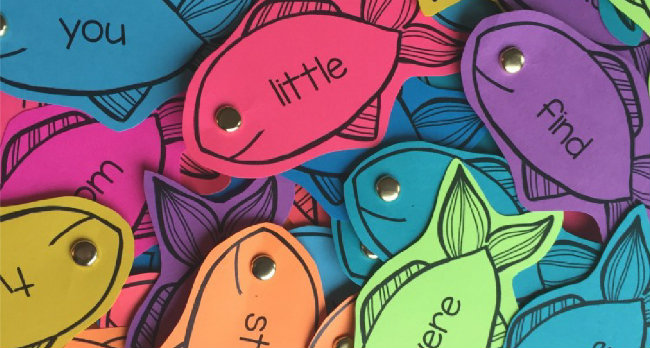
Turn sight word learning into an exciting fishing adventure! Create a fishing rod using a stick, string, and a magnet as the hook. Then, attach paper clips to sight word cards and spread them out. Children can ‘fish’ for words and read them as they catch them.
How it helps: Sight Word Fishing is a creative and interactive way to engage children in learning sight words. This sight words activity idea is particularly effective for tactile learners and adds a physical element to sight word practice.
5. Memory Match Activity
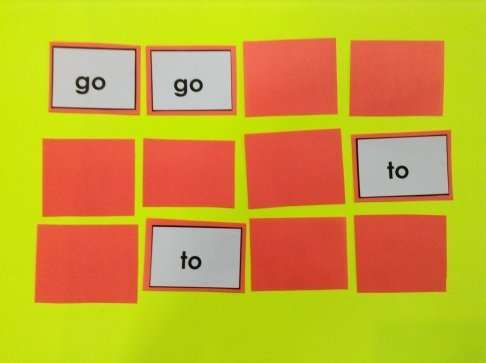
A memory match is a classic that can be easily tailored for sight word learning. Write each sight word on two separate cards and lay them all face down. Players take turns flipping over two cards at a time, trying to find matching pairs. When a pair is found, the player reads the word aloud.
How it helps: This activity not only helps in reinforcing word recognition but also improves memory and concentration. It’s a simple yet effective tool, suitable for both home and classroom environments.
Related Reading: Brain Boosting Memory Games for Kids
6. Word Building Blocks
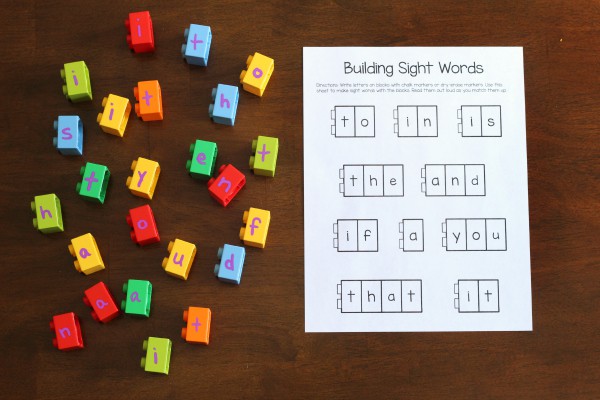
Incorporating sight words into block play is a fantastic way to make sight words fun. Write different sight words on the sides of building blocks. As children stack the blocks, encourage them to read the words. They can also use the blocks to construct sentences, enhancing both their reading and creative construction skills.
How it helps: This activity not only makes learning interactive but also helps in developing fine motor skills and spatial awareness. It’s a perfect example of making sight words fun by combining learning with a favorite play activity.
Related Reading: Best Fine Motor Activities for Kids
7. Sight Word Songs
Music and rhythm are powerful tools in education, and creating Sight Word Songs is an excellent way to utilize them. Set sight words to familiar tunes or create your melodies.
How it helps: Singing the words helps in memorization and pronunciation, and the musical element adds an enjoyable twist to learning. This method is particularly effective for auditory learners and adds a lively, energetic dimension to sight word leaning.
8. Word Jump
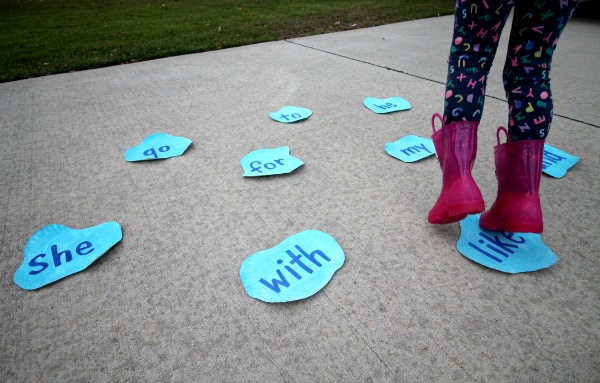
Word jump is a sight word activity that combines physical activity with learning. Write sight words on the ground using chalk or on pieces of paper. Play some music and have the kids jump from word to word. When the music stops, they must read the word they’re standing on.
How it helps: This activity not only helps in word recognition but also in developing gross motor skills. It’s one of the fun ways to practice sight words, ensuring that kids stay active and engaged while learning.
9. Sight Word Art
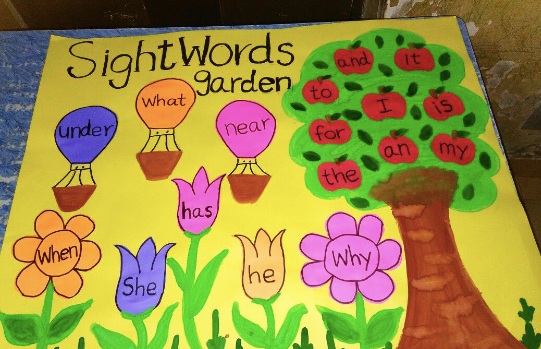
Sight word art is an engaging way to combine sight word crafts with learning. Provide children with paper, markers, and stickers to create a visual representation of different sight words. They can draw, paint, or make collages, focusing on the sight word they are learning.
How it helps: This artistic approach not only aids in reinforcing word recognition but also allows children to express their creativity. It’s an excellent activity for visual learners, helping them connect the visual art with the sight word.
10. Flashcard Fun
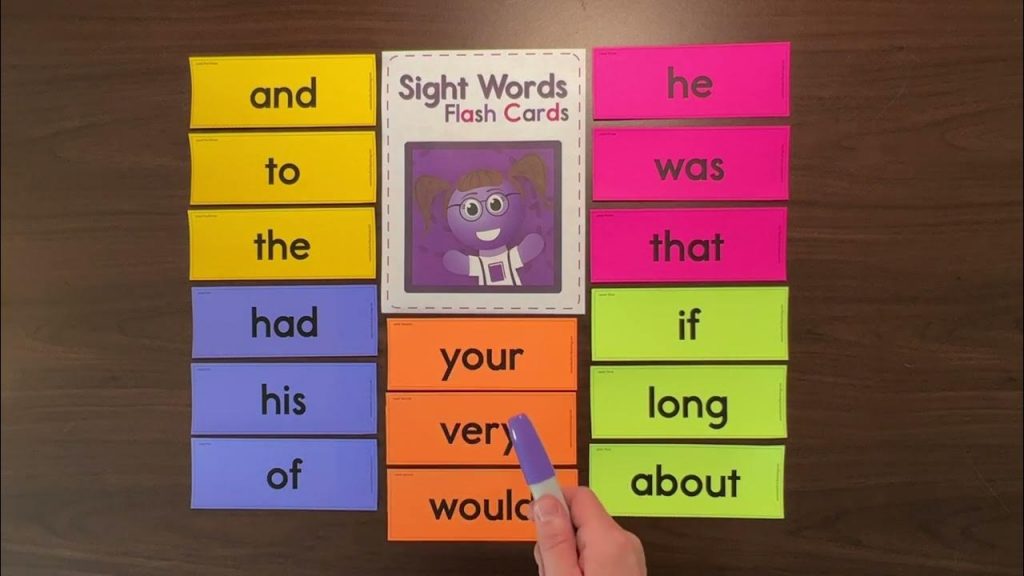
Flashcards are one of the most traditional ways to teach sight words. Start by writing each sight word on a separate card. Show one card at a time to your child, and ask them to say the word. As they become more familiar with the words, you can make the activity more challenging by timing their responses or asking them to use the word in a sentence.
How it helps: This method not only reinforces word recognition but also enhances vocabulary and sentence construction skills. Keep the sessions short and lively to maintain their interest and make sight word practice ideas engaging and effective.
Related Reading: Best Sight Word Apps for Kids [Android & iOS]
11. Word Hunt
Organizing a word hunt is an adventurous way to engage kids with sight words. Hide sight word cards around your home or classroom and send the kids on a hunt to find them. Each time they find a word, ask them to read it aloud and perhaps even use it in a sentence or write it down.
How it helps: This activity not only makes learning dynamic but also helps in physical activity and teamwork. Word hunts combine movement with education.
12. Word Puzzles
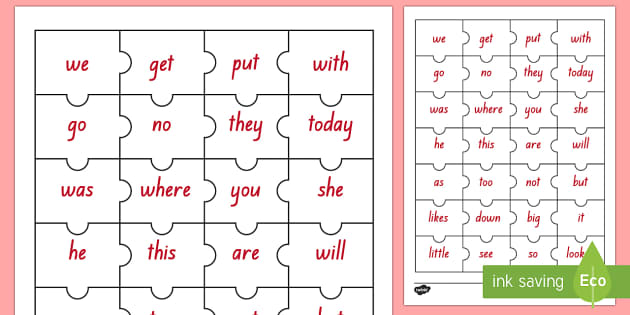
Word puzzle is one of the best sight word practice activities. Create puzzles where children need to match sight words with pictures or with their scrambled versions. Jigsaw puzzles with sight words can also be an engaging way to learn.
How it helps: As children piece together the puzzles, they reinforce their understanding and recall of sight words. This activity is not only educational but also a great workout for the brain, enhancing cognitive skills along with word recognition.
13. Sight Word Snack Time

Sight word snack time turns meal or snack preparation into a learning session. Write sight words on index cards and attach them to various snack items or ingredients. As children choose their snacks, ask them to read the sight words. You can also use food items to spell sight words, like arranging pretzel sticks or carrot sticks to form words.
How it helps: This method makes learning interactive and tasty and is a unique approach, combining culinary skills with literacy development.
Related Reading: How to Teach Sight Words to Kindergarten Kids
4 Importance of Sight Word Activities for Kids
Sight words are a key component of early reading skills. They are the most frequently used words in the English language and often don’t follow regular phonetic rules, making them challenging for children to decode. Here’s why sight word activities are essential:
- Mastery of sight words helps children read more fluidly and quickly, improving their reading fluency.
- Recognizing these words easily boosts children’s confidence in their reading abilities, encouraging them to engage more with texts.
- Knowing sight words allows children to focus on the meaning of the text rather than struggling with decoding, leading to better comprehension.
- Familiarity with sight words aids children in reading independently, fostering a love for reading and learning.
Incorporating sight word activities into early education is crucial for developing strong foundational reading skills setting the stage for future academic success.
Related Reading: Best Writing Activities for Kids
Conclusion
Incorporating sight word activities into a child’s learning routine is beneficial and essential for developing strong reading skills. From creative crafts and activities to interactive storytelling and digital tools, these activities make learning sight words engaging and fun. By mastering sight words, children gain a significant advantage in reading fluency, comprehension, and overall confidence in their literacy journey. Let’s embrace these methods to give our young readers the foundation they need to succeed and foster a lifelong love for reading.
Frequently Asked Questions (FAQs)
At what age should children start learning sight words?
Children can start learning sight words as early as preschool, typically around 4 or 5. Early exposure helps build a foundation for reading readiness as they progress through school.
How often should children practice sight words?
Regular practice is key. Ideally, children should engage in short, frequent sessions of sight word practice daily to reinforce their learning and retention of the words.
Can these activities to learn sight words be adapted for different learning levels?
Absolutely! Sight word activities can be easily modified to suit various learning levels and styles, ensuring that each child is challenged and engaged at their own pace.

















